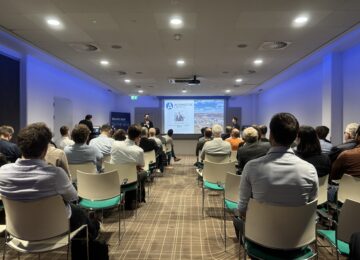Flexibility leads to better incorporation of Wind at Sea
Research firm CE-Delft was commissioned by the Ministry of Economic Affairs and Climate to study the incorporation of energy from Wind at Sea in the energy system. Several scenarios were examined for this purpose. Each of the scenarios assumes a substantial capacity of different flexibility sources, such as electrolysers (on land or at sea) and batteries. These sources are necessary for balancing the supply and demand of electricity and can therefore also contribute to the incorporation of offshore wind into the energy system.
Balancing electricity supply and demand
Toward 2040, flexibility, such as batteries, electrolysers and interconnection, will be necessary for balancing electricity supply and demand. According to CE-Delft, the role of flexibility sources will increase especially in the 30s. If there is no substantial commitment to the development of flexibility sources in the 30s, wind energy may not be utilized in more and more hours. In that case, offshore wind farms lose their business case, and at the same time there are problems with security of supply at hours with little wind and solar production. In addition, the rollout of flexibility sources in the period 2031-2040 has an impact on how much electrical landfall can be accommodated. Here electrolysers are particularly important, but the rollout of other flexibility sources that can contribute to containment, such as demand-side management and batteries, is also important.
Impact of offshore wind landfall
In addition to balancing, flexibility resources also have an impact on the landfall of offshore wind. Efficient deployment of flexibility sources and using wind energy directly at the connection location as much as possible reduces the impact on the onshore energy infrastructure. Between 35 and 45% of wind energy can be used directly to meet electricity demand in the Netherlands. With deployment of various flexibility sources (batteries, demand-side management, power-to-heat), between 40 and 50% of wind energy can be utilized in the form of electricity in the Netherlands.
Managing flexibility resources
From the study results, it can be concluded that the deployment of flexibility sources ensures that substantially more electrical landfall from offshore wind can be integrated into the onshore system (without extensions of high-voltage connections). In total, the deployment of flexibility sources is expected to allow between two and seven additional connections to be realized until 2040, depending on the scenario. This highlights the important role of flexibility sources in integrating electricity from offshore wind farms into the onshore power system.
It is therefore necessary, according to CE-Delft, from the perspective of system integration, to ensure that the flexibility sources necessary for balancing electricity supply and demand are realized at connection locations. This is especially true for electrolysers, if they are placed on land. It is also possible for flexible electrolysis to be applied at sea and hybrid connections to be realized. Deployment of batteries makes a limited contribution to integrating electricity from offshore wind farms. Although there may be other considerations for placing batteries at these locations, such as the large amount of transmission capacity at these sites.
Read the entire CE-Delft report here.





